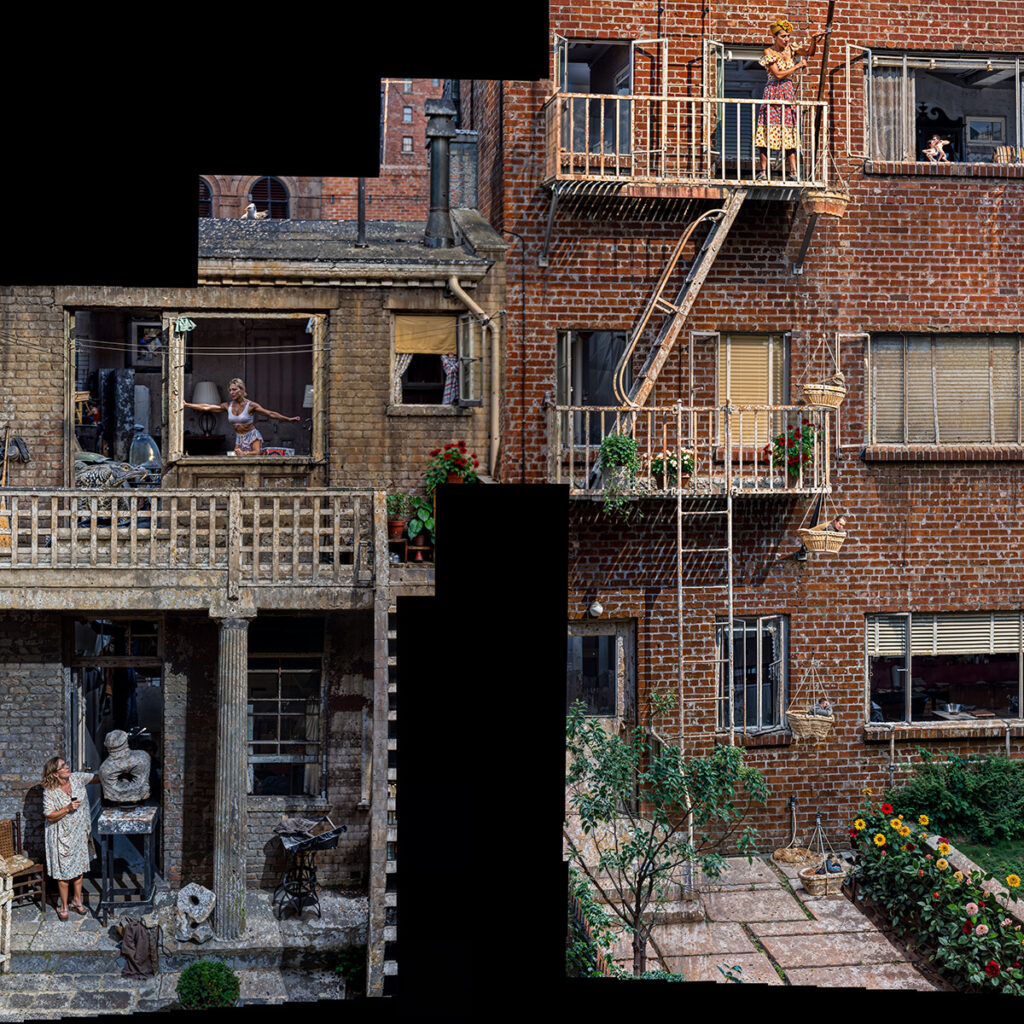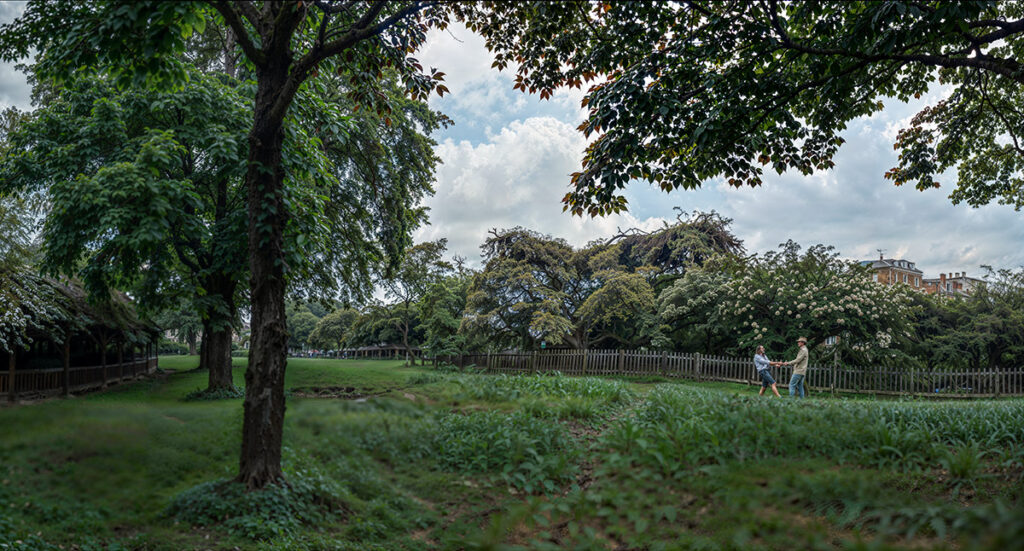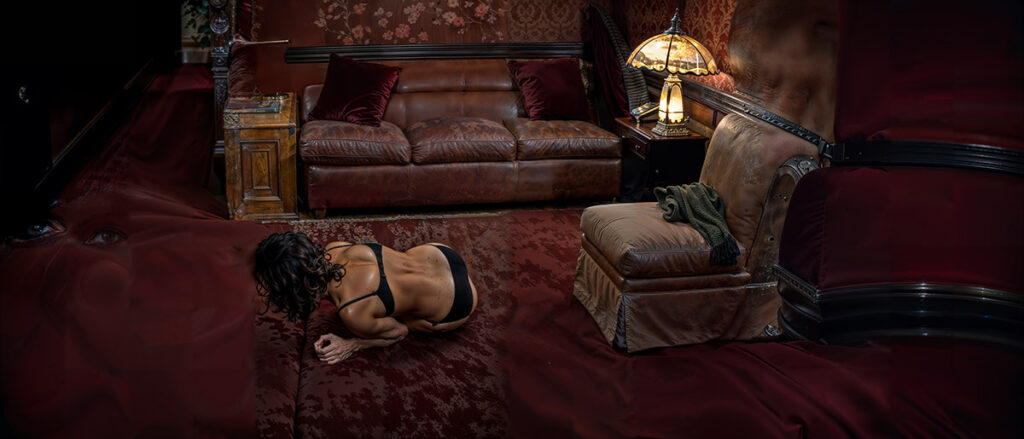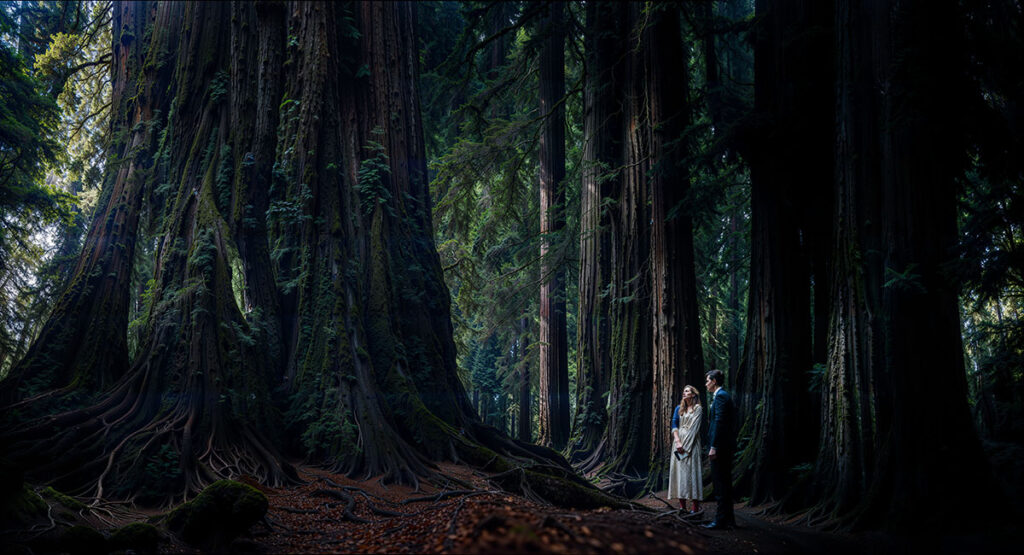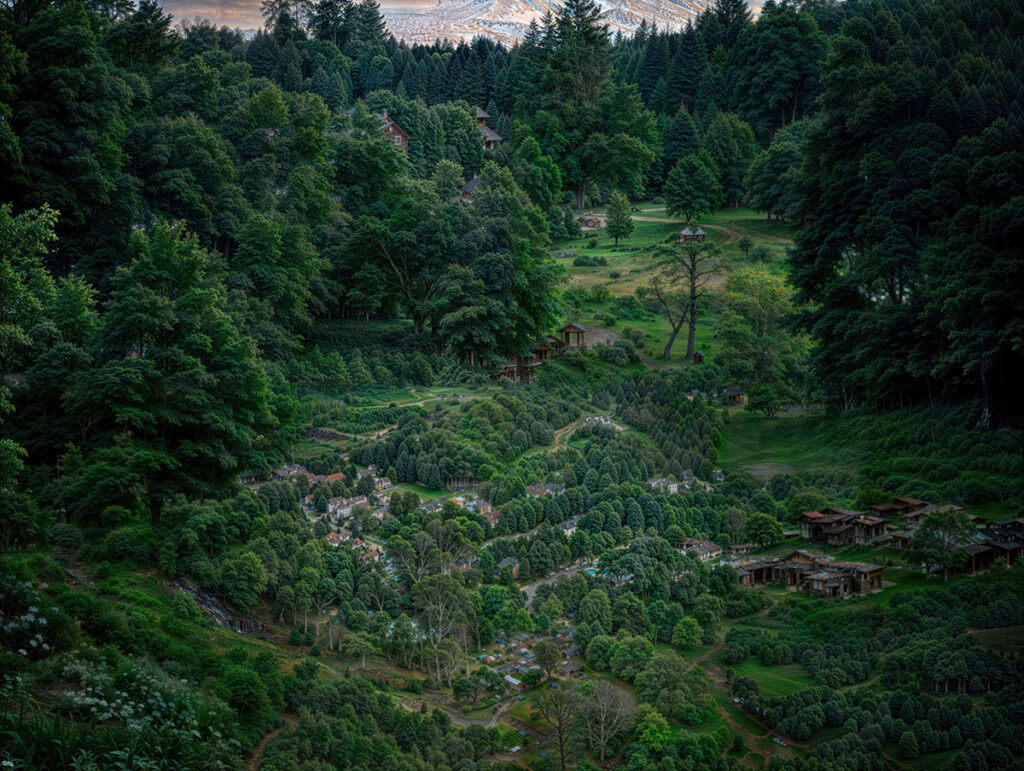Readonlymemories V
Photographie sur aluminium
Dimensions variables
Cette série s’inscrit dans la continuité d’un projet initié en 2003, qui explorait l’espace cinématographique sous un angle spatial plutôt que temporel. L’artiste introduit ici des scènes emblématiques du cinéma dans l’espace latent de systèmes d’intelligence artificielle, où les algorithmes analysent et génèrent de nouveaux détails visuels absents des images originales.
Cette approche s’ancre dans le postcinéma, explorant une forme novatrice de remake où le système informatique, et non des acteurs humains, réinterprète l’œuvre initiale. Le processus repose sur la capacité des algorithmes à détecter des formes dans le “bruit visuel” et à produire des images hybrides conservant l’essence des scènes originelles tout en les transformant.
Ce travail interroge la nature même de l’image cinématographique à l’ère numérique et les frontières entre vision humaine et vision machine. En réactivant la mémoire visuelle collective à travers le prisme algorithmique, Chatonsky propose une réflexion sur les modalités contemporaines de perception et de réinterprétation des œuvres.
